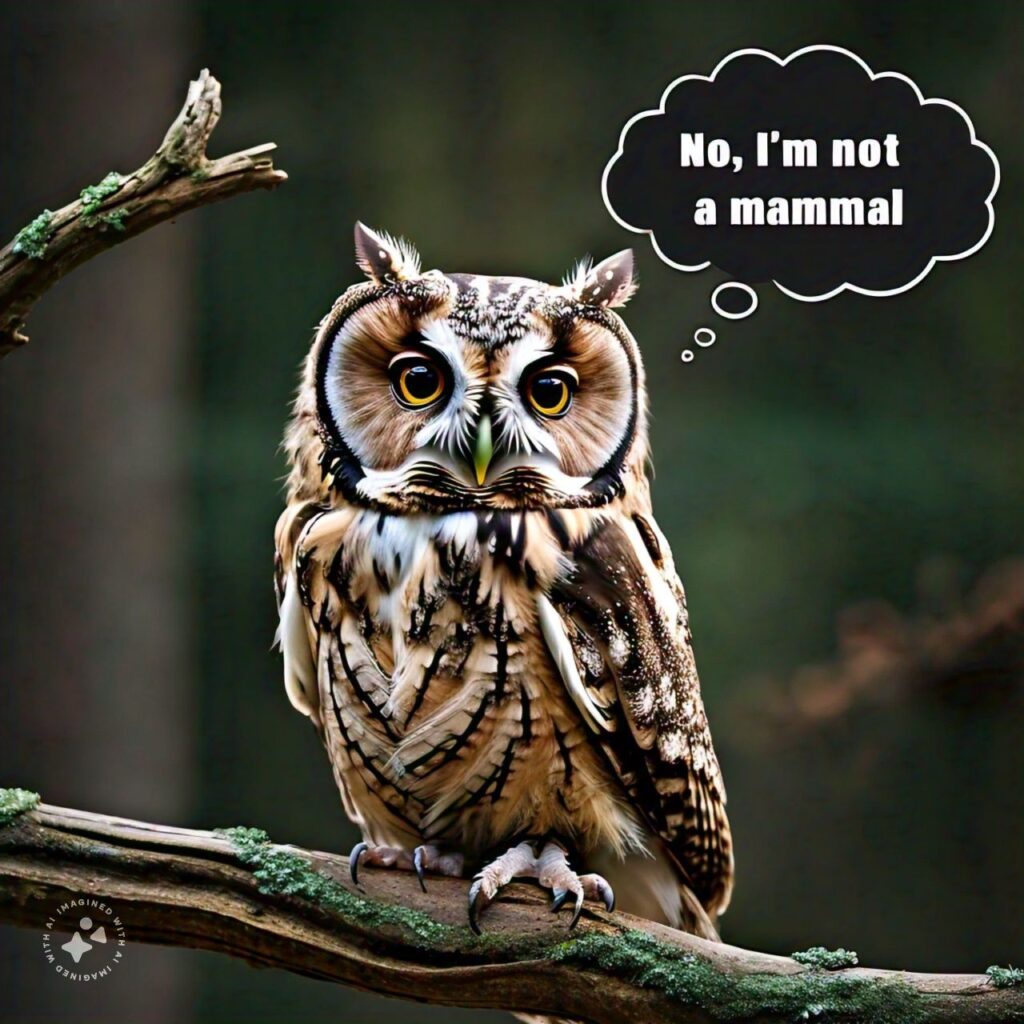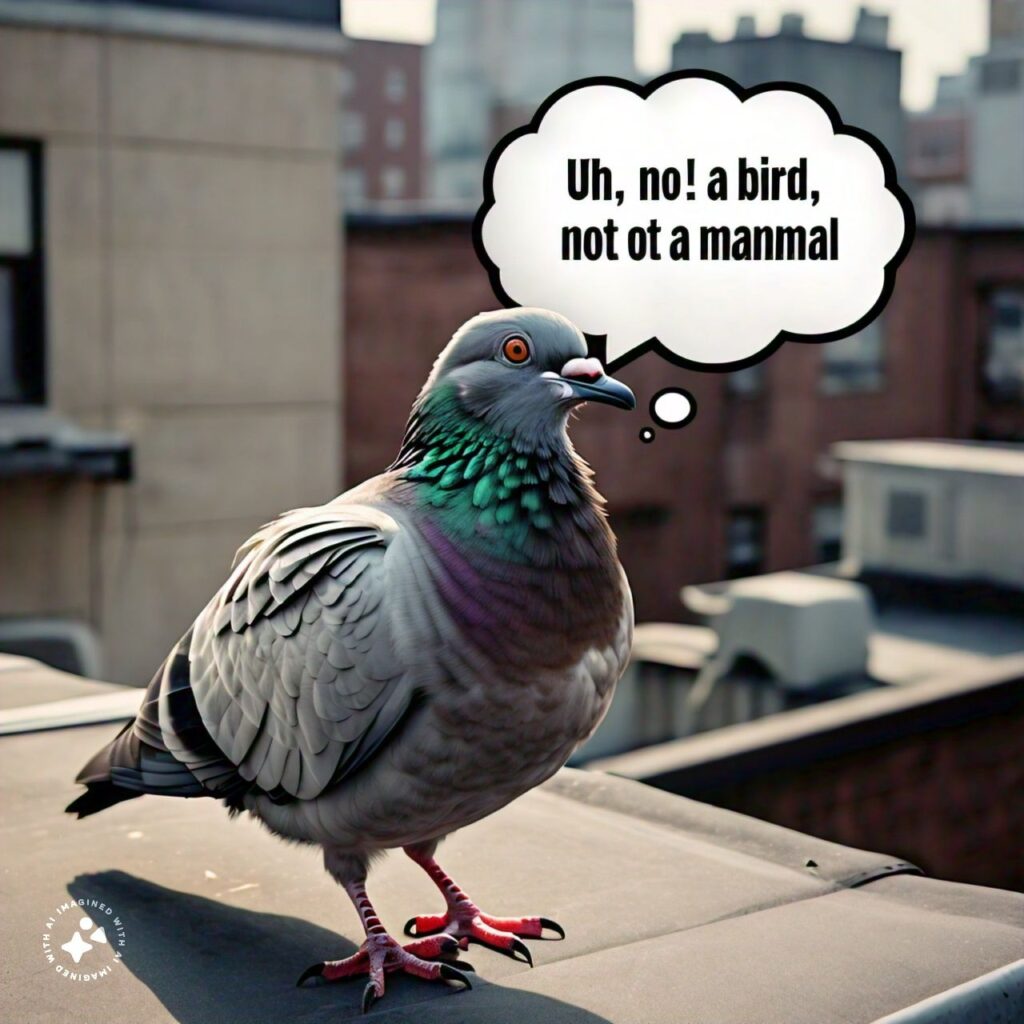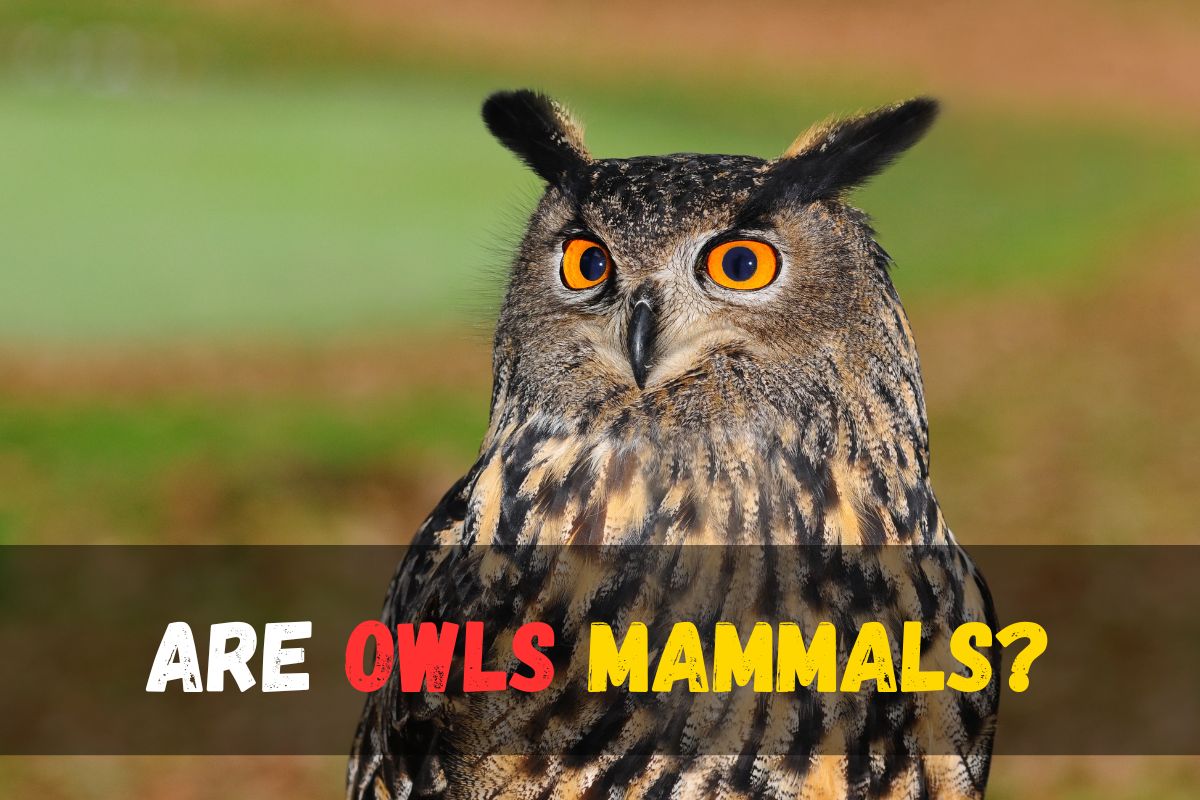Are Owls Mammals?
Owls, those enigmatic creatures of the night, have captivated the human imagination for centuries. With their silent flight, keen eyesight, and haunting calls, owls are often associated with wisdom, mystery, and magic. Did you know that there are over 200 species of owls found across the globe, ranging in size from the tiny Elf Owl to the majestic Eurasian eagle owl?
Are Owls Dangerous or Friendly?
Brief overview of animal classification
Before delving into the question of whether owls are mammals, let’s take a moment to understand the basics of animal classification. Animals are divided into different groups based on shared characteristics such as body structure, reproductive methods, and genetic makeup. The two main groups are vertebrates and invertebrates, with vertebrates further classified into five subgroups: mammals, birds, reptiles, amphibians, and fish.
Do Owls Mate for Life?
Statement of the main question: Are owls mammals?
Owls, with their captivating presence and distinctive characteristics, often evoke wonder and curiosity among nature enthusiasts and casual observers alike. At first glance, one might assume that these creatures, with their soft feathers, large eyes, and warm-blooded nature, fall neatly into the category of mammals. However, delving deeper into the realm of biological classification reveals a surprising truth: owls do not belong to the mammalian group.
How Long Are Owls Legs?
The question “Are owls mammals?” serves as a gateway to unraveling the intricacies of animal taxonomy and evolutionary biology. By exploring the defining traits of mammals and comparing them with the unique features of owls, we embark on a journey to understand the evolutionary paths that have shaped these remarkable creatures. Through this inquiry, we gain insights into the diverse adaptations that enable owls to thrive in their habitats and fulfill their ecological roles as apex predators.
As we delve into the nuances of owl physiology, behavior, and reproduction, we encounter a rich tapestry of biological adaptations that set these birds apart from their mammalian counterparts. From their specialized feathers for silent flight to their extraordinary auditory abilities for hunting in the dark, owls exemplify the ingenuity of evolutionary processes in shaping diverse life forms.
Understanding Animal Classification
Overview of taxonomy and its importance
Taxonomy, the science of classifying organisms, serves as the foundation for understanding the diversity of life on Earth. By systematically categorizing living beings into groups based on shared characteristics, taxonomy provides a framework for organizing and studying the natural world. This hierarchical system allows scientists to classify organisms into increasingly specific categories, from broad kingdoms to individual species. Through taxonomy, researchers can trace evolutionary relationships, identify new species, and gain insights into the complex web of life that surrounds us.
Explanation of the main animal groups: mammals, birds, reptiles, etc.
Animal classification encompasses a wide range of groups, each characterized by unique features and evolutionary histories. Among the main animal groups, mammals, birds, reptiles, amphibians, and fish stand as prominent classifications. Mammals, distinguished by their warm-bloodedness, fur or hair, and ability to nurse their young with milk, represent one of the most familiar groups to humans. Birds, with their feathers, beaks, and adaptations for flight, exhibit remarkable diversity in size, shape, and behavior. Reptiles, including snakes, lizards, and turtles, are defined by their scaly skin, cold-blooded metabolism, and reliance on external sources of heat. Amphibians, such as frogs and salamanders, undergo metamorphosis from aquatic larvae to terrestrial adults, bridging the divide between water and land. Fish, found in both freshwater and marine environments, display an array of adaptations for swimming and breathing underwater, ranging from bony structures to cartilaginous skeletons.
Criteria for classifying animals into different groups
The classification of animals into distinct groups is guided by specific criteria that reflect their anatomical, physiological, and ecological traits. These criteria may include factors such as body structure, reproductive methods, habitat preferences, and genetic relationships. For example, mammals are characterized by the presence of mammary glands for nursing offspring, while birds possess feathers and lay hard-shelled eggs. Reptiles often exhibit scales, while amphibians undergo metamorphosis from aquatic larvae to terrestrial adults. By applying these criteria, scientists can systematically organize and categorize animals into appropriate taxonomic groups, facilitating our understanding of their evolutionary history and ecological roles.
How Long Do Owls Live
Characteristics of Mammals
Defining features of mammals
Mammals, a diverse group of vertebrate animals, possess several distinctive features that set them apart from other organisms:
- Warm-blooded nature: One of the defining characteristics of mammals is their ability to regulate their body temperature internally, maintaining a relatively constant level regardless of external conditions. This endothermic (warm-blooded) physiology allows mammals to thrive in a wide range of environments, from polar regions to tropical forests.
- Mammary glands and milk production: Mammals are unique in their ability to produce milk to nourish their offspring. Female mammals possess specialized mammary glands that secrete milk, providing essential nutrients and antibodies to their young during early development. This lactation process fosters bonding between mother and offspring and enhances the survival chances of newborn mammals.
- Hair or fur covering: Another characteristic feature of mammals is the presence of hair or fur covering their bodies. This insulating layer serves multiple purposes, including thermoregulation, protection against physical injury, and camouflage. The texture, color, and density of mammalian fur vary widely across species and are often adapted to suit specific ecological niches and environmental conditions.
- Live birth or giving birth to live young: Most mammals give birth to live offspring, a reproductive strategy known as viviparity. This process involves internal fertilization and gestation within the mother’s womb, culminating in the birth of fully developed young. However, there are exceptions among mammals, such as monotremes like the platypus and echidna, which lay eggs instead of giving birth to live young.
Examples of typical mammals
Mammals encompass a vast array of species, ranging from the familiar pets we keep in our homes to the majestic wildlife inhabiting diverse ecosystems worldwide. Some examples of typical mammals include:
- Humans (Homo sapiens): As the dominant species on Earth, humans exhibit a wide range of physical, cognitive, and social traits, distinguishing them from other mammals.
- Dogs (Canis lupus familiaris): Domestic dogs have been companions to humans for thousands of years, displaying remarkable diversity in size, shape, and behavior due to selective breeding.
- Elephants (Loxodonta africana and Elephas maximus): These iconic giants of the animal kingdom are known for their intelligence, social complexity, and distinctive trunk, which they use for various tasks, including feeding, communication, and tool manipulation.
- Whales (various species): Whales, the largest mammals on Earth, inhabit marine environments and exhibit a wide range of adaptations for aquatic life, including streamlined bodies, flippers, and blowholes for breathing.
The Fascinating World of Owls
Brief history and evolution of owls
Owls, with their distinctive appearance and nocturnal habits, have captured the imagination of humans for millennia. The evolutionary history of owls traces back millions of years, with fossil evidence suggesting that these enigmatic birds have been present on Earth since the Paleocene epoch. Over time, owls diversified into a wide range of species, adapting to various habitats and ecological niches around the world. Despite their ancient lineage, owls continue to thrive in modern ecosystems, showcasing remarkable resilience and adaptability in the face of environmental changes.
Do Owls Eat Squirrels?
Physical characteristics of owls
Owls possess a suite of physical adaptations that enable them to excel as nocturnal hunters:
- Feathers and flight adaptations: One of the most distinctive features of owls is their specialized feathers, which enable silent flight—a crucial advantage for hunting unsuspecting prey under the cover of darkness. Unlike other birds, owls have fringed feathers that break up airflow and reduce turbulence, allowing them to fly with almost no sound. Additionally, their large wings and light body structure contribute to their stealthy aerial maneuvers and efficient hunting techniques.
- Beaks and talons: Owls are equipped with sharp, curved beaks and powerful talons that serve as formidable weapons for capturing and dispatching prey. Their beaks are hooked and sharply pointed, enabling them to tear into flesh with precision and efficiency. Meanwhile, their strong talons are capable of exerting considerable force, enabling owls to grasp and immobilize prey of various sizes, from small rodents to larger birds and mammals.
Owl behavior and habitat
Owls exhibit a diverse range of behaviors and inhabit a variety of habitats, from dense forests to open grasslands:
- Nocturnal hunting: As primarily nocturnal predators, owls are most active during the night, when they rely on their keen senses of sight and hearing to locate prey in the darkness. Their exceptional night vision and acute hearing allow them to detect and capture prey with remarkable precision, making them efficient hunters in low-light conditions.
- Adaptations for stealth: Owls have evolved a suite of adaptations for stealthy hunting, including silent flight, cryptic coloration, and specialized facial discs that help to channel sound waves toward their ears. These adaptations enable owls to approach prey undetected and strike with lethal accuracy, minimizing the chances of alerting potential targets.
- Diverse habitats: Owls are found in a wide range of habitats, including forests, grasslands, deserts, and urban areas. Each owl species has its own habitat preferences and ecological requirements, ranging from dense woodlands for species like the Great Horned Owl to open grasslands for species like the Burrowing Owl. Despite their diverse habitats, owls share a common reliance on suitable roosting sites and ample prey availability for their survival.
Are Owls Mammals?
Addressing the misconception
The question of whether owls are mammals arises from a common misconception due to their furry appearance and warm-blooded nature. However, despite these superficial similarities, owls belong to a different class of animals altogether. By addressing this misconception, we can unravel the unique characteristics that distinguish owls from mammals and shed light on their true biological classification.

Exploring owl reproductive methods
Owls employ distinctive reproductive methods that further differentiate them from mammals:
- Egg-laying process: Unlike mammals, which give birth to live young, owls are oviparous, meaning they lay eggs as part of their reproductive cycle. Female owls typically lay a clutch of eggs in a well-concealed nest, where they are incubated until hatching. The size and number of eggs vary among owl species, with larger species generally laying fewer eggs compared to smaller species.
- Incubation and parental care: Once the eggs are laid, both male and female owls take turns incubating the eggs to ensure optimal conditions for embryonic development. This shared responsibility reflects the strong parental care exhibited by owls, with both parents actively involved in feeding, protecting, and nurturing their offspring after hatching. This parental investment is crucial for the survival of young owls, as they rely on their parents for food, warmth, and protection during the vulnerable early stages of life.
Comparing owl characteristics to typical mammals
While owls share certain characteristics with mammals, such as being warm-blooded and possessing fur-like feathers, they also exhibit significant differences that align them with other avian species:
- Respiratory system: Owls possess a highly efficient respiratory system adapted for sustained flight, characterized by the presence of air sacs and specialized lungs that enable rapid gas exchange. This respiratory adaptation is unique to birds and distinguishes them from mammals, which have a different lung structure and breathing mechanisms.
- Feeding habits: Owls are carnivorous predators that primarily hunt small mammals, birds, and insects, using their keen senses of sight and hearing to locate prey. Unlike typical mammalian predators, which rely primarily on scent and pursuit to capture prey, owls employ stealth and ambush tactics to surprise and capture their victims with swift and silent strikes.
By comparing the characteristics of owls to those of typical mammals, we can gain a deeper understanding of their evolutionary adaptations and ecological roles within their respective habitats.
Owl Classification: A Closer Look
Scientific classification of owls
Owls belong to the order Strigiformes, which encompasses two families: Tytonidae and Strigidae. Let’s take a closer look at the scientific classification of owls:
1. Order: Strigiformes
The order Strigiformes comprises all owl species, encompassing a diverse range of birds of prey characterized by their nocturnal habits, keen senses, and distinctive physical features. Strigiformes is derived from the Latin word “striga,” meaning owl or screech owl, reflecting the association of these birds with the night and their haunting calls that echo through the darkness.
2. Family: Tytonidae and Strigidae
Owls are further divided into two main families:
- Family Tytonidae: This family includes barn owls, commonly recognized by their heart-shaped facial discs, long legs, and silent flight. Barn owls are renowned for their exceptional hearing abilities, which enable them to locate prey in the dark using sound alone. With their pale plumage and ghostly appearance, barn owls are often associated with eerie landscapes and ancient ruins.
- Family Strigidae: The family Strigidae comprises typical owls, encompassing a wide variety of species found in diverse habitats worldwide. Strigidae owls exhibit a range of sizes, colors, and hunting strategies, from the small and agile scoop owls to the large and powerful eagle owls. Despite their differences, all members of the Strigidae family share common adaptations for nocturnal hunting, including acute vision, silent flight, and specialized talons for capturing prey.
Highlighting owl features that differentiate them from mammals
While owls share certain traits with mammals, such as being warm-blooded and possessing fur-like feathers, several key features differentiate them from mammals:
- Reproductive methods: Owls lay eggs and exhibit parental care, contrasting with the live birth characteristic of mammals.
- Respiratory system: Owls have a unique respiratory system adapted for flight, featuring air sacs and specialized lungs that differ from mammalian respiratory structures.
- Feeding habits: Owls are carnivorous birds of prey that hunt primarily at night, employing silent flight and keen senses to locate and capture prey. This differs from the diverse feeding strategies observed among mammals, which include herbivores, carnivores, and omnivores.
- Skeletal structure: Owls possess lightweight skeletons with adaptations for flight, including hollow bones and fused vertebrae, distinguishing them from the skeletal structure of mammals.
The Importance of Proper Classification
Scientific significance
Proper classification is crucial for organizing and understanding the vast diversity of life on Earth. By accurately categorizing organisms into taxonomic groups based on shared characteristics and evolutionary relationships, scientists can unravel the complexities of biological diversity and trace the evolutionary history of species. This systematic approach provides a framework for studying the genetic, morphological, and ecological traits of organisms, enabling researchers to identify patterns, make predictions, and formulate hypotheses about the natural world. Additionally, proper classification facilitates communication and collaboration among scientists, ensuring that research findings are accurately documented, shared, and applied to further our understanding of the world around us.
Conservation implications
Accurate classification plays a pivotal role in conservation efforts aimed at protecting endangered species and preserving biodiversity. By correctly identifying and categorizing species, conservationists can prioritize areas for conservation action, implement targeted management strategies, and monitor population trends over time. Proper classification also facilitates the identification of species at risk of extinction due to habitat loss, climate change, poaching, and other threats, allowing conservationists to develop effective conservation plans and allocate resources where they are most needed. Furthermore, understanding the evolutionary relationships among species can inform conservation decisions by identifying key species for ecosystem stability and resilience.
Understanding ecological roles and behavior
Proper classification enables scientists to explore the ecological roles and behaviors of organisms within their respective habitats. By categorizing species into functional groups based on their ecological traits and interactions, researchers can unravel the complex webs of relationships that govern ecosystems and regulate ecological processes. Understanding the ecological roles of organisms, such as predators, prey, pollinators, and decomposers, is essential for maintaining ecosystem balance and resilience in the face of environmental changes. Additionally, proper classification facilitates the study of animal behavior, including feeding strategies, reproductive patterns, and social interactions, providing insights into the evolutionary adaptations that shape species’ survival and success in their environments.
FAQ’S
Is A bird A Mammal?
In biological classification, birds and mammals are distinctly categorized groups. Mammals, characterized by their warm-blooded nature, possession of mammary glands, and unique birth process, stand apart from birds. Birds, known scientifically as avians, undergo egg birthing, which is notably different from the mammalian birth process.
When considering whether a bird is a mammal, it’s important to understand the defining features of each group. While both birds and mammals share certain characteristics such as being warm-blooded, they differ significantly in their reproductive strategies. Mammals give birth to live young and nurse them with milk produced by mammary glands, whereas birds lay eggs.
Penguins and ducks, often thought of as birds due to their ability to fly, are indeed classified as avians. Despite their superficial similarities to mammals, such as caring for their young, they still fall within the avian category.
Therefore, based on biological classification and the distinctive features of mammals and birds, it’s clear that a bird is not a mammal. Their differences in reproductive biology, specifically the method of birth, firmly place them in separate taxonomic groups.
What animal class is an owl?
Owls, fascinating creatures renowned for their nocturnal habits, belong to the avian order Strigiformes. These birds, predominantly active at night, share a close evolutionary relationship with nightjars, which fall under the order Caprimulgiformes. Therefore, when considering the animal class to which an owl belongs, it is classified within the avian order Strigiform.
Do owls lay eggs?
Yes, owls indeed lay eggs. The number of eggs laid varies among different owl species, typically ranging from 1 to 13, although the common range for most species is between 2 and 5 eggs. This variation in the number of eggs is influenced by factors such as the species of owl and environmental conditions. Incubation of the eggs begins promptly after the first egg is laid, and during this period, the eggs are seldom left unattended. This natural process ensures the continuation of owl populations, with each species adapting to their unique reproductive patterns.

Is A Pigeon A mammal?
A pigeon is not a mammal. Mammals are characterized by certain physiological features, one of which is the ability of females to lactate, providing nourishment to their young. This distinguishes mammals from other animal groups. While pigeons share certain behaviors such as caring for their offspring, they do not possess mammary glands and thus cannot lactate. Instead, they feed their chicks by regurgitating food. Therefore, despite their nurturing behaviors, pigeons do not fall under the category of mammals.

Is the Eagle a mammal?
No, an eagle is not a mammal. Eagles belong to the bird family, specifically the order Accipitriformes. Like all birds, eagles lay eggs and have feathers, beaks, and wings for flight. They do not possess mammary glands or give birth to live young, which are defining characteristics of mammals. Instead, eagles feed their young by regurgitating food. Thus, while eagles are magnificent creatures known for their predatory prowess and aerial grace, they are not classified as mammals.


